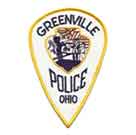|

 |
Greenville City Police
2019 Drive Sober or Get Pulled Over
August 15, 2019
Greenville, OH – The Greenville Police Department will join local and
national law enforcement officers and highway safety advocates all
across the country for the 2018 National DRIVE SOBER OR GET PULLED OVER
Campaign. During the mobilization, officers will be cracking down
on motorists, August 17th – September 3rd– both day and night.
Did you know?
Alcohol consumption impairs your thinking, reasoning and muscle
coordination—all vital abilities to operating a vehicle safely. At a
.08 Blood Alcohol Concentration (BAC), your crash risk increases
exponentially. Because of this risk, it's illegal in all 50 states, the
District of Columbia and Puerto Rico to drive with a BAC of .08 or
higher. But even a small amount of alcohol can affect driving ability.
Labor Day weekend brings an increase in highway travel and drunk
driving, so State and local law enforcement agencies across the Nation
are stepping up enforcement to crack down on this deadly epidemic and
save lives.
Approximately one-third of all traffic crash fatalities in the United
States involve drunk drivers (with blood alcohol concentrations [BACs]
of .08 of higher). In 2013, there were 10,076 people killed in these
preventable crashes.
On Labor Day weekend in 2013, there were 424 crash fatalities
nationwide. Almost half (48%) of those fatal crashes involved drivers
who had been drinking (.01+ BAC); 38 percent involved drivers who were
drunk (.08+ BAC); and more than a fourth (27%) involved drivers who
were driving with a BAC almost twice the illegal per se limit (.15+
BAC).
In 2013, approximately 1 in 5 child (12 and younger) passenger deaths
were in drunk-driving crashes. Seventy-one percent of the time, it was
the child’s own driver who was drunk.
Of those child passengers killed while riding with a drunk driver, 44 percent weren’t buckled up at the time of the crash.
In addition to the human toll drunk driving takes on our country, the
financial impact is devastating as well: based on 2010 numbers (the
most recent year for which cost data is available), impaired-driving
crashes cost the United States $49.8 billion annually.
In every state it’s illegal to drive with a BAC of .08 or higher, yet
one person is killed in a drunk-driving crash every 52 minutes in the
United States.
Of the 10,076 people killed in drunk-driving crashes in 2013, 65 percent were the drunk drivers themselves.
In fatal crashes during the month of August over the five-year period
of 2009-2013, almost 1 out of 10 (8%) of the drunk drivers involved had
one or more previous convictions for drunk driving.
Men are more likely than women to be driving drunk in fatal crashes. In
2013, 23 percent of males were drunk in these crashes, compared to 15
percent for females.
Drunk driving is more common at night, and Labor Day weekend in 2013
was no exception. Half of all the fatalities during the nighttime (6
p.m. to 5:59 a.m.) involved drunk drivers, as compared to 14 percent
during the day.
Motorcycle riders have the highest overall rate of alcohol impairment
in fatal crashes. In 2013, 27 percent of the motorcycle riders killed
were driving impaired.
For more sobering statistics on drunk driving in the United States, visit https://one.nhtsa.gov/drivesober
If you drink and drive, you could get end up in steel handcuffs, lose
your driver's license and lose your vehicle. A DUI arrest could cost
you up to $10,000 in attorney fees, fines, car towing, repairs, higher
insurance rates, and lost time at work. If you kill someone while
driving drunk, you could face manslaughter charges.
Law enforcement will be cracking down on impaired drivers around the
clock. You can expect to get a ride to the police station at the
very least. “No excuses and no exceptions,” said Chief Strick .
More than 900 law enforcement partners around Ohio, including the Ohio
State Highway Patrol, will be aggressively enforcing the law with a
ZERO TOLERANCE policy.
The Greenville Police Department urges everyone to DRIVE SOBER for yourself, your families, friends, and strangers.
|
|
|
|

